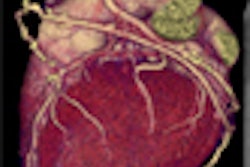Dear CT Insider,
Intracerebral hemorrhage (ICH) is the deadliest and most debilitating form of stroke. Patients who survive are often left with severe disabilities affecting speech, movement, and mental capacity.
Now there is a potential treatment, in the form of an investigational drug that appears to reduce bleeding and improve outcomes in some patients. Treatment is expensive and risky, however, potentially increasing the likelihood of blood clots in other parts of the body.
The good news is that CT can reliably select those patients likely to benefit from treatment, according to the results of two new studies presented at this month's International Stroke Conference in San Francisco.
Researchers from Toronto found that patients with a high-density "spot sign" were more than eight times as likely at follow-up to have hematoma expansion, an independent predictor of mortality and morbidity in ICH. Another study from Boston found that the CT spot sign had a 98% negative predictive value for identifying patients who would not develop hematoma expansion, and would therefore not benefit from therapy.
You'll find the rest of the story in this issue's Insider Exclusive, brought to our subscribers before the rest of the AuntMinnie.com community can access it.
In other stroke news, the Alberta Stroke Program Early CT Score (ASPECTS), previously shown to be a strong predictor of which patients would benefit from thrombolytic therapy following noncontrast CT head scan, was found to work even better with perfusion CT.
And in a third stroke study, radiologists at Massachusetts General Hospital in Boston have concluded that perfusion CT is closely correlated to diffusion-weighted MR for delineating the core infarct. You'll learn more about CT's piece of the stroke imaging puzzle in the CT Digital Community.




















